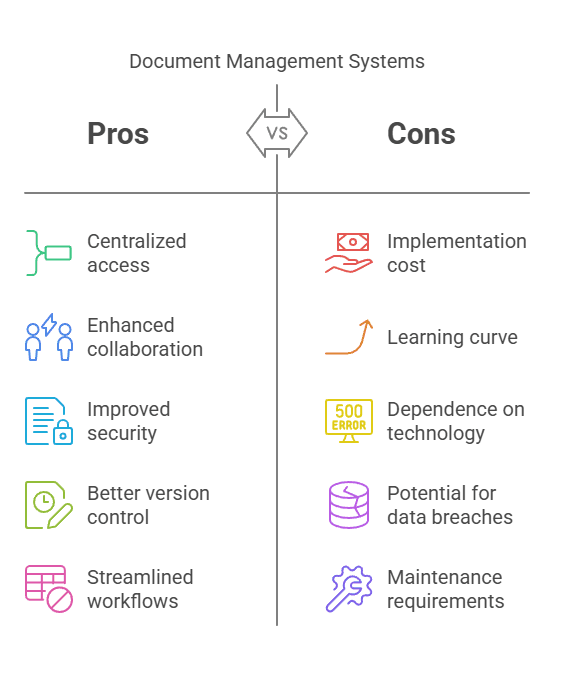Did you know businesses waste $20,000 per employee annually due to poor document management? In today’s digital world, managing documents efficiently is crucial for businesses of all sizes. A document management system (DMS) helps streamline processes, improve productivity, and ensure data security. If you're still relying on manual document storage, it’s time to explore the benefits of a DMS and how it can revolutionize your workflow.

1. Centralized Storage & Easy Access
Gone are the days of digging through folders or email chains. A Document Management System eliminates the chaos of scattered files by storing everything in a single, searchable location. No more wasting time searching through email attachments, shared drives, or filing cabinets. With a DMS, you can instantly retrieve documents using keywords, tags, or metadata. Advanced systems even include optical character recognition (OCR), allowing you to scan and index paper documents for digital access. Version control ensures you always work with the latest file, while cloud-based access means your team can securely retrieve documents from anywhere.
A DMS stores all files in one searchable hub, with:
Pro Tip: Use optical character recognition (OCR) to scan and index paper documents.
2. Enhanced Security & Compliance
Data breaches and compliance failures can cripple a business. A DMS provides enterprise-grade security with features like role-based access, encryption, and audit logs. You control who can view, edit, or share sensitive files, reducing the risk of leaks. For industries with strict regulations—such as healthcare (HIPAA), finance (SOX), or legal (GDPR)—a DMS ensures compliance by maintaining proper records, retention policies, and audit trails. Studies show that 60% of small businesses shut down within six months of a major data breach, making document security a top priority.
Protect sensitive data with:
📊 Stat: 60% of SMBs fold within 6 months of a data breach
3. Improved Collaboration & Productivity
With cloud-based DMS, employees can access documents from anywhere, fostering remote work and collaboration. Teams can edit, share, and review documents in real-time, improving communication and efficiency.

4. Cost & Time Savings
By reducing paper usage and storage costs, a document management system contributes to cost savings and environmental sustainability. Businesses can save on printing, paper, and physical storage while reducing their carbon footprint.
5. Disaster Recovery & Audit Trails
Natural disasters, cyberattacks, or hardware failures can wipe out critical files. A DMS safeguards your data with automated backups, version history, and secure cloud storage. Even if your office is compromised, your documents remain accessible. For example, a law firm recovered a decade’s worth of case files after a ransomware attack because their DMS maintained encrypted, off-site backups.
Backup & restore: Never lose files to crashes or ransomware.
Audit logs: Track who accessed/changed files and when.
🔗 Read About this Article:
What is Document Management System?
Gartner Report: Gartner Survey Reveals 47% of Digital Workers Struggle to Find the Information Needed to Effectively Perform Their Jobs
Conclusion
A Document Management System isn’t just about storing files—it’s about saving time, money, and stress while boosting security. Ready to modernize?
